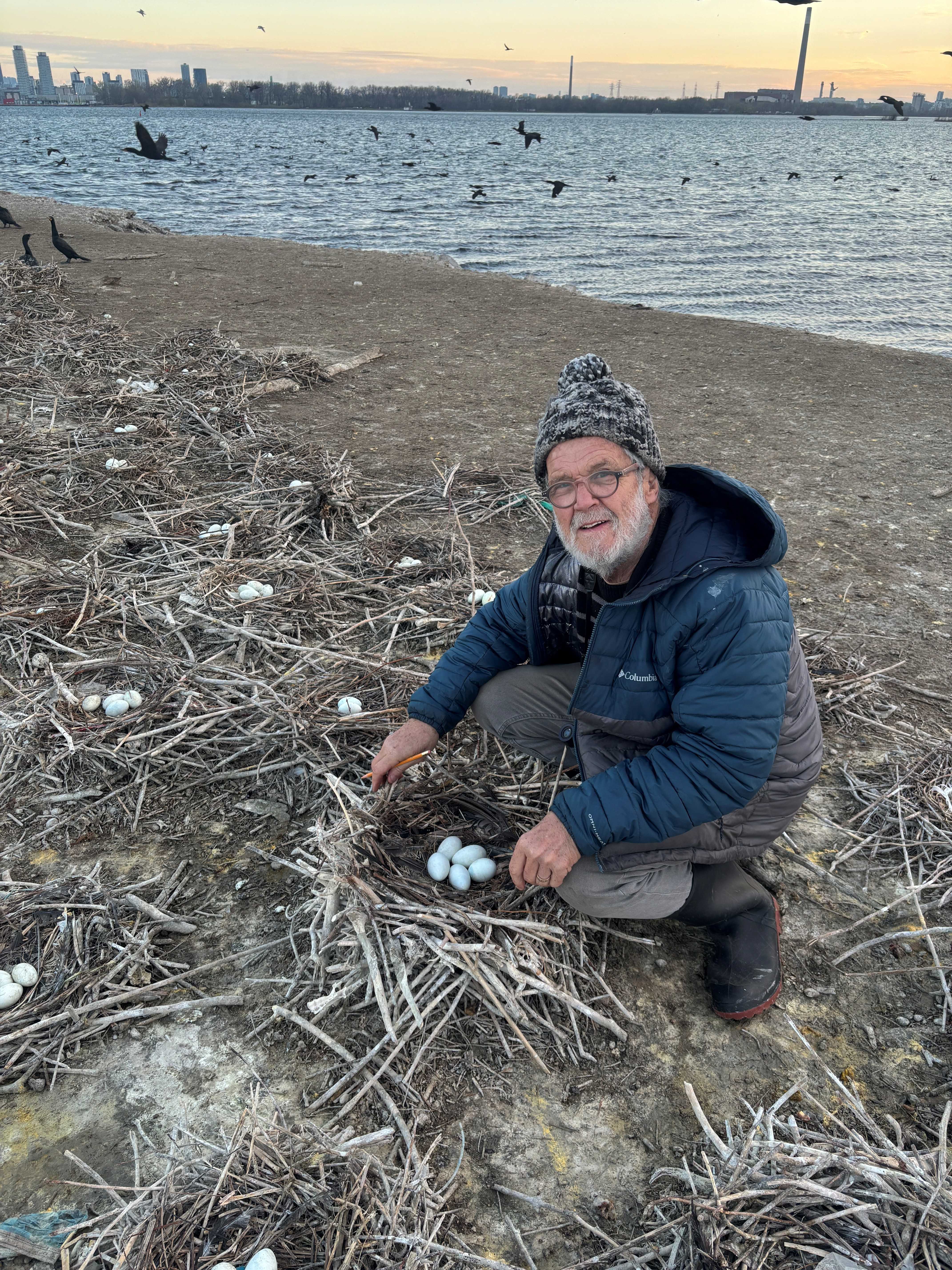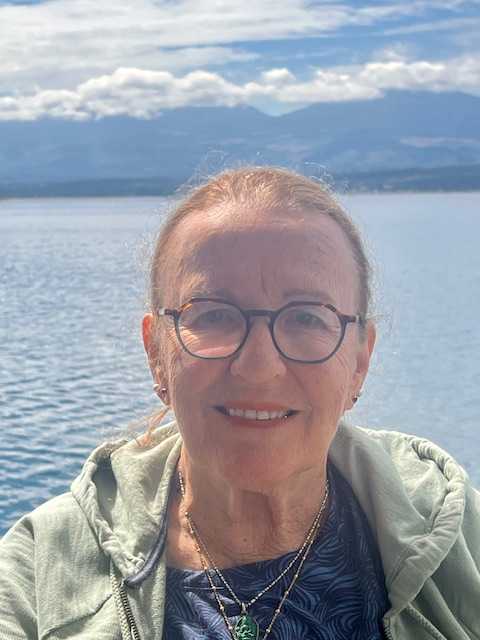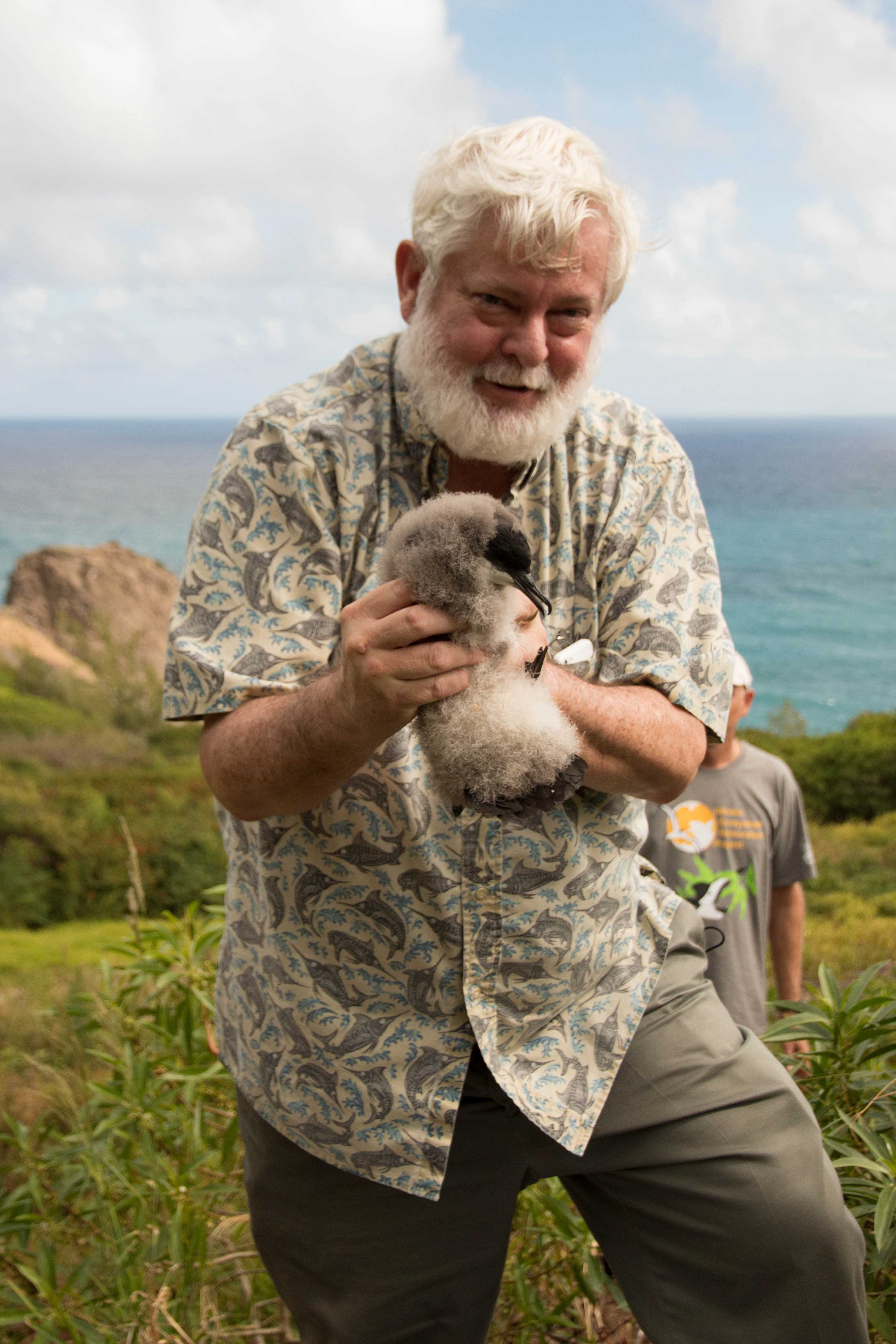Weseloh, D.V. Chip.
Canadian Wildlife Service, Toronto, Ontario
Kai Curry Lindahl Plenary. 60 Years of Bird Colonies and Boats - My Career.

My career started, I believe, in 3rd year undergrad (1965) at Gustavus Adolphus College, in St. Peter, MN, when my ecology prof happened to mention that in Great Blue Heron colonies, adults nest in the same tree and same nest in successive years. This meant that in raising their young, they pooped in the same spot year after year… and all that poop greatly affected the vegetation beneath their nest trees. That remark led to a class project, which two years later evolved into my MSc (at Michigan Technological University in the Michigan UP). Observations on that heron colony led to my PhD (at the University of Calgary, in Alberta) where I had wanted to study local movements of herons. However, the professor there (Dr. M.T. Myres) didn't care about herons but if I would switch to the urban ecology of gulls, he'd take me on. As I was finishing that fieldwork in 1972, I had a phone call and an offer from Bill (W.W.H.) Gunn for a "pre" Post-Doc to document local movements of gulls at a newly proposed airport near Toronto at Pickering. These two gull studies, and a stint at the Provincial Museum of Alberta, led to a 35-year working career and a 13-year (and counting) Emeritus career with the Canadian Wildlife Service in Burlington and Toronto on the Laurentian Great Lakes. On the Great Lakes, starting in 1978, I was tasked with ensuring annual collections of Herring Gull eggs, and reporting on contaminant trends, from 15 Canadian and US sites; I was also to search for any potential biological effects of contaminants. I have been fortunate to be able to study, in at least some capacity, all 13 species of colonial waterbirds that nest there, and some that only migrate through.
I have probably been to, or at least seen, every waterbird colony on the Canadian side of The Lakes. I have been to the gull-cormorant colony at Snake Island, off Kingston, over 300 times including many overnight stays in an elevated blind. I will discuss the trials, tribulations and some of the results of my years of monitoring and research (and I have often been told that they are not the same!). Perhaps the most serious of those trials involved my near career-ending challenge of 1984, when my position and the entire Herring Gull Egg Monitoring Program was cut from CWS' budget. I have enjoyed collaborating and publishing with over 100 colleagues from academia, government, private industry, naturalist clubs and the public, most notably: in the Gret Lakes, Dave Moore, Hans Blokpoel, Jim Ludwig, Pierre Mineau, Craig Hebert, Laird Shutt, Lee Harper, Irene Mazzocchi and the Great Lakes Area Working Group for Colonial Waterbirds on the Great Lakes ("GLAWGCW"), and in New York City with Susan Elbin and Nellie Tsipoura, where I I have learned the Harbour is almost like a marine extension of the Great Lakes. As a strong advocate for local naturalists and birders --- after all, they saved my job in 1984--- my wife, Linda, and I, were part of the Organizational Committee that formed the Ontario Field Ornithologists (aka OFO!) in 1983 as well as being their first editors of "Ontario Birds", and I have continued in that capacity for 22 years. Somewhere in there, we've had time to raise our three sons and 25 foster kids. Examples of the motivation and inspiration that always keeps me going will be provided by snippets from the appropriate Rock & Roll and Country songs of the day!
Francie Cuthbert
Distinguished Teaching Professor Emerita, Department of Fisheries, Wildlife and Conservation Biology, University of Minnesota, St. Paul, MN USA
Kai Curry Lindahl Plenary: Conservation and Management of Colonial Waterbirds and Piping Plovers: Magnificent Treasures in the North American Great Lakes
 This presentation will explore lessons and challenges from 50 years studying colonial waterbirds and Piping Plovers in the Great Lakes. My career began in the 1970s with my MS research on the behavior of Ring-billed Gulls. I then transitioned to Caspian Tern inter-colony movement for a PhD. While engaged in these studies, I became intrigued by small declining populations-why they were small and can their numbers be increased? This led to research on Piping Plovers and Common Terns. Soon after, Double-crested Cormorants entered the Great Lakes as a new breeding species and the peaceful world of waterbirds and their typically isolated and idyllic colonies became sites of conflict and death. This was a very disturbing time for those of us who saw cormorants as a natural part of the waterbird community and witnessed the management issues created at mixed species colony sites when intensive cormorant management was implemented. To address concerns about increasing numbers of cormorants and declining numbers of other colonial species, I coordinated, along with my Canadian colleague, Chip Weseloh, the binational Great Lakes Colonial Waterbird Survey. As we completed the 4th decadal census in 2010, it became clear that estimating population size once every 10 years was too infrequent to detect and react to important changes in a timely fashion. With another colleague, Linda Wires, we tested a strategy to census "72 Priority Sites" out of over 400 nesting sites and confirmed this method as reliable of most waterbird trends. We also incorporated aerial photography, which both reduced cost and disturbance and increased precision. While the waterbird work was going on, I became passionate about the effort to recover the nearly extirpated population of Piping Plovers in the Great Lakes. This major effort is ongoing and will also be summarized in this Plenary as well as in a special plover symposium on Thursday.
This presentation will explore lessons and challenges from 50 years studying colonial waterbirds and Piping Plovers in the Great Lakes. My career began in the 1970s with my MS research on the behavior of Ring-billed Gulls. I then transitioned to Caspian Tern inter-colony movement for a PhD. While engaged in these studies, I became intrigued by small declining populations-why they were small and can their numbers be increased? This led to research on Piping Plovers and Common Terns. Soon after, Double-crested Cormorants entered the Great Lakes as a new breeding species and the peaceful world of waterbirds and their typically isolated and idyllic colonies became sites of conflict and death. This was a very disturbing time for those of us who saw cormorants as a natural part of the waterbird community and witnessed the management issues created at mixed species colony sites when intensive cormorant management was implemented. To address concerns about increasing numbers of cormorants and declining numbers of other colonial species, I coordinated, along with my Canadian colleague, Chip Weseloh, the binational Great Lakes Colonial Waterbird Survey. As we completed the 4th decadal census in 2010, it became clear that estimating population size once every 10 years was too infrequent to detect and react to important changes in a timely fashion. With another colleague, Linda Wires, we tested a strategy to census "72 Priority Sites" out of over 400 nesting sites and confirmed this method as reliable of most waterbird trends. We also incorporated aerial photography, which both reduced cost and disturbance and increased precision. While the waterbird work was going on, I became passionate about the effort to recover the nearly extirpated population of Piping Plovers in the Great Lakes. This major effort is ongoing and will also be summarized in this Plenary as well as in a special plover symposium on Thursday.
Francesca J Cuthbert is a Distinguished Teaching Professor Emerita in the Department of Fisheries, Wildlife and Conservation Biology at the University of Minnesota-Twin Cities. She is also a Visiting Professor at the University of Michigan Biological Station where she taught Biology of Birds for 25 summers and is continuing her Piping Plovers research. Francie received her PhD from the University of Minnesota, a MS from Northern Illinois University and a BS from the University of Michigan. She has studied waterbirds in the North American Great Lakes for more than 50 years. For her research and conservation efforts she has received the Minnesota Chapter of The Wildlife Society Award, the T.S. Roberts Award from the Minnesota Ornithologists' Union, a U.S. Fish and Wildlife Service Recovery Champion Award, the Ralph Schreiber Conservation Award from the American Ornithological Society and the Kai Curry Lindahl Conservation Award from the Waterbird Society. She has published more than 100 peer-reviewed articles and many reports on various topics of avian ecology, conservation and management. Her research has been supported by more than 60 grants from federal and state agencies and non-profit organizations. And during her career, she has advised 50 graduate students on avian biology. She is a member of the Waterbird Council of the Americas, Fellow of the American Ornithological Society and past-president of the Waterbird Society.
David Duffy
Gerrit Parmele Wilder Professor Emeritus, School of Life Sciences, University of Hawaii
Robert Cushman Murphy Plenary. The Tau of Poo: How bird droppings deposited on a few small islands off of Peru helped to shape world history extending from Rapa Nui, to European and American agriculture and industrialization, to climate studies, and even to our DNA
 This presentation ties my interest in seabirds to the wider world around us, examining how bird droppings deposited on a few small arid islands off of Peru helped to shapeworld history extending from Rapa Nui, to European and American agriculture and industrialization, to climate studies, and even to our DNA, with appearances by Alexander Von Humboldt, Nobel Laureate Fritz Haber, and Kon Tiki.
This presentation ties my interest in seabirds to the wider world around us, examining how bird droppings deposited on a few small arid islands off of Peru helped to shapeworld history extending from Rapa Nui, to European and American agriculture and industrialization, to climate studies, and even to our DNA, with appearances by Alexander Von Humboldt, Nobel Laureate Fritz Haber, and Kon Tiki.
I spent my teen and undergraduate summers on 17-acre Great Gull Island, at the mouth of Long Island Sound, as part of a citizen's research project involving thousands of terns. My mentor was Dr. Helen Hays of the American Museum of Natural History, from whom I learned how to do field work and to manage people and the logistics of working on a small, waterless island. At Harvard I was part of a small group interested in ornithology. Dr Raymond Paynter at the Museum of Comparative Zoology took a few of us on field trips to Colombia and Yucatan, inspiring me to a career venturing to distant places. At Princeton for graduate studies, I benefited from the mentorship of three great but very different ecologists, Henry Horn, Bob May, and John Terborgh. They left me free to pursue my dissertation on Peruvian guano birds. I spent six months "alone" on an island with three Quechua Indians from the highlands; they taught me an invaluable series of curse words but also about the birds.
Over the last 50 years I have become an ecological jack of all trades working on old growth forest in the Smokies, Lyme disease ecology on Long Island, seabirds and biodiversity in Alaska, penguin competition with commercial fisheries in southern Africa, El Niño and seabirds, the seabirds of Rapa Nui (Easter Island), Ecuadorian traditional medicine, nesting of Blue-footed Boobies in Galapagos, avian disease in Galapagos and Hawaii, and feral cats. Most field researchers gravitate in time to administration as their knees deteriorate or they grow families. In my case I was dragged into admin at the Darwin Station in Galapagos just six months after leaving Princeton. I became the interim director. Grad school just does not prepare one for this. I had to repair relations with the Ecuadorian Galapagos park service as the station was broke and Ecuador was withholding lots of money. Detente initially involved drinking large qualities of beer and listening. The park director Miguel Cifuentes became my mentor, a friend, and role model of how a leader stands up for his people and the land. The Darwin Station got back on track financially and we could meet payroll and hire scientists.
I love research but I am very good at admin, perhaps because I don't like it. After Galapagos I went on to lead teams studying Alaskan biodiversity, how seabirds recovered from the Exxon Valdez oil spill, seabird ecology in the Benguela upwelling ecosystem, and most recently a quarter century in Hawaii raising over $250 million to put teams into the field to try to slow the destruction of the Hawaiian aina (land). I have always been a congenital optimist and this has endured. I have been lucky in what I chose to do, where, and with whom. I have been lucky to have a marvelous collection of friends who cheered and laughed with me and occasionally made sure I didn't get too full of myself. I have never lost my sense of wonder, be it a small new research finding, or a killer whale passing under our boat and looking up at me, or being in the presence of giant trees. Most recently it has been the wonder of watching my grandkids vacuuming up new words and experiencing their own sense of wonder about just about everything.
